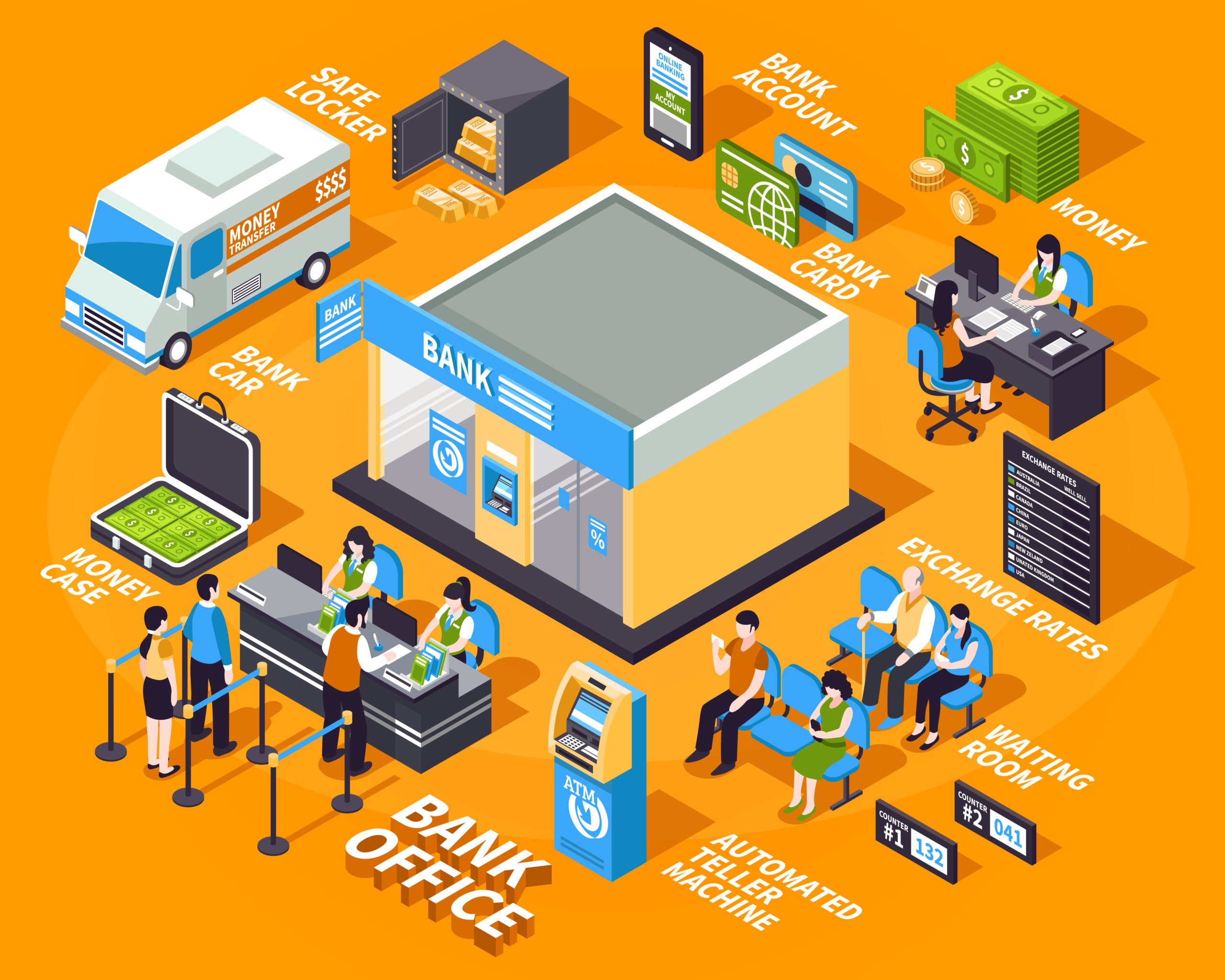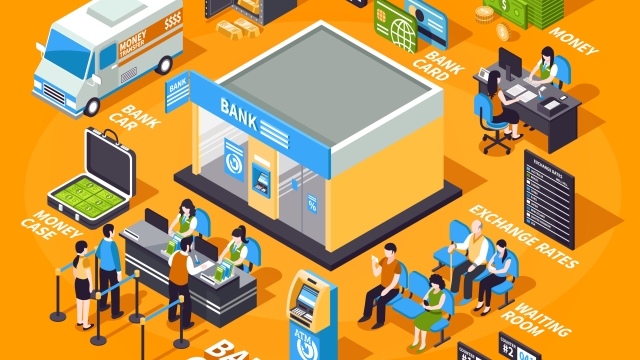In today’s fast-paced world, where technological advancements are reshaping numerous industries, banking is no exception. With the rise of robotic banking, automation has taken center stage, revolutionizing how financial institutions operate and serve their customers. As more and more banks embrace automation, the traditional brick-and-mortar branches are slowly giving way to sleek, self-service kiosks and virtual platforms. These cutting-edge solutions aim to provide a smarter and more efficient banking experience for customers while streamlining internal processes.
Banking automation offers a wide array of benefits, both for customers and financial institutions. For customers, it means less time spent in long queues at the bank or waiting on hold for customer support. With automated solutions, routine transactions such as depositing checks, transferring funds, or paying bills can be done swiftly and effortlessly. Additionally, virtual assistants and chatbots provide instantaneous support, answering queries and guiding customers through complex procedures round the clock.
Financial institutions, on the other hand, are finding immense value in banking automation’s ability to reduce costs and increase efficiency. By automating tedious and repetitive tasks, banks can free up their employees’ time to focus on more meaningful interactions. Moreover, automated processes minimize the risk of human errors, ensuring enhanced accuracy across various banking operations. This not only boosts productivity but also safeguards the integrity of financial transactions.
As the benefits of banking automation become increasingly evident, it is crucial for financial institutions to understand the various solutions available in the market. A comprehensive banking automation solutions guide can help them navigate through the vast array of options, selecting the most suitable ones for their specific needs. From robotics process automation (RPA) to machine learning algorithms and artificial intelligence, there are numerous technologies that banks can leverage to automate and optimize their operations.
In the following sections, we will delve deeper into the world of banking automation, exploring the different technologies, their applications, and the potential challenges that this transformative shift might bring. Join us as we unravel the intricacies of robotic banking and decipher how embracing automation is paving the way for a smarter banking future.
Introduction to Robotic Banking
Robotic banking, also known as banking automation, is revolutionizing the way financial institutions operate in today’s fast-paced world. With the advancement of technology, automation solutions have emerged as a key driver in the banking industry. These solutions not only streamline processes but also enhance efficiency and accuracy, enabling banks to provide better services to their customers.
In the past, traditional banking relied heavily on manual processes, which were time-consuming and prone to human error. However, with the rise of robotic banking, institutions are now able to automate repetitive tasks, such as data entry, transaction processing, and customer support. This allows employees to focus on more complex and strategic activities, while automation handles the routine tasks effortlessly.
Banking automation solutions guide financial institutions on how to implement and leverage various technologies to optimize their operations. From chatbots and virtual assistants to robotic process automation (RPA) and artificial intelligence, these solutions offer a wide range of possibilities for banks to improve their processes and overall customer experience.
Embracing automation in banking is not only a smart move but also a necessary one. As customer expectations continue to evolve, banks must adapt and provide seamless experiences that are on par with other industries. Automation enables faster and more accurate transactions, shorter processing times, and round-the-clock availability, allowing customers to access their accounts and perform transactions whenever and wherever they want.
In the next sections, we will explore the different aspects and benefits of banking automation, including its impact on customer service, workforce management, and cybersecurity. So, fasten your seatbelts and get ready to dive into the world of robotic banking, where innovation and technology are shaping the future of finance.
Benefits of Banking Automation
Automation in the banking industry has brought about numerous benefits that are reshaping the way financial institutions operate. With the integration of cutting-edge technology, banking automation is revolutionizing traditional banking practices and opening up new possibilities for a smarter and more efficient future.

Enhanced Efficiency: One of the key advantages of banking automation is the significant improvement in operational efficiency. By automating repetitive and time-consuming tasks such as transaction processing and customer data management, banks can streamline their workflows and reduce the need for manual intervention. This not only accelerates the overall banking process but also minimizes errors, resulting in a smoother and more reliable customer experience.
Cost Savings: Another significant benefit is the potential for cost savings that banking automation offers. By automating routine tasks, banks can reduce their dependency on human resources and allocate their workforce to more high-value activities. This not only saves time but also reduces labor costs, enabling financial institutions to allocate their resources more effectively and achieve greater profitability.
Enhanced Customer Service: With banking automation solutions, institutions can enhance their customer service capabilities. Automated systems can efficiently handle customer inquiries, account inquiries, and provide real-time support, reducing the need for customers to wait for assistance. Additionally, automation enables banks to process transactions faster, improving the overall customer experience. By leveraging technology, banks can provide round-the-clock services, ensuring that customers have access to banking facilities whenever they need them.
In conclusion, banking automation brings a myriad of benefits to financial institutions, from improved efficiency and cost savings to enhanced customer service. As technology continues to advance, it is crucial for banks to embrace automation to stay competitive in the fast-paced world of banking and provide their customers with a smarter and more convenient banking experience.
Implementing Banking Automation Solutions
Understanding the Potential
Banking automation solutions have revolutionized the way financial institutions operate in recent years. By utilizing advanced technologies, such as artificial intelligence and machine learning, banks can streamline their processes, enhance operational efficiency, and improve customer service. Embracing automation in the banking sector has the potential to bring a host of benefits and create a smarter future for both banks and their customers.Identifying Key Areas for Automation
When implementing banking automation solutions, it is crucial to identify the key areas where automation can have the most significant impact. This involves assessing the existing processes and workflows, identifying inefficiencies, and prioritizing tasks that can be automated. For example, tasks like customer onboarding, loan origination, and fraud detection can benefit greatly from automation, freeing up valuable human resources and reducing manual errors.Choosing the Right Solution
No Code Automation
Selecting the right banking automation solution is vital for successful implementation. It is essential to evaluate different providers and their offerings carefully. Factors to consider include scalability, reliability, security, and integration capabilities with existing banking systems. It is also important to assess the ease of use and customization options provided by the solution. By choosing the right automation solution, banks can ensure a seamless transition and maximize the benefits of automation.





